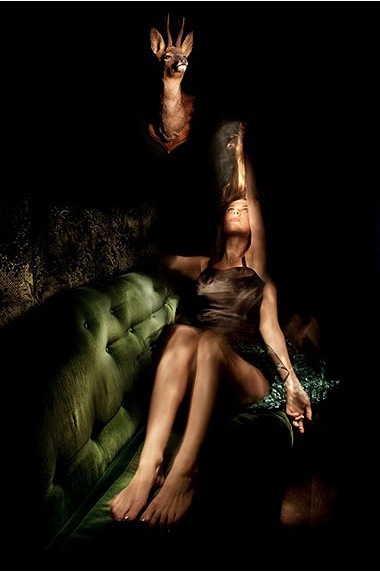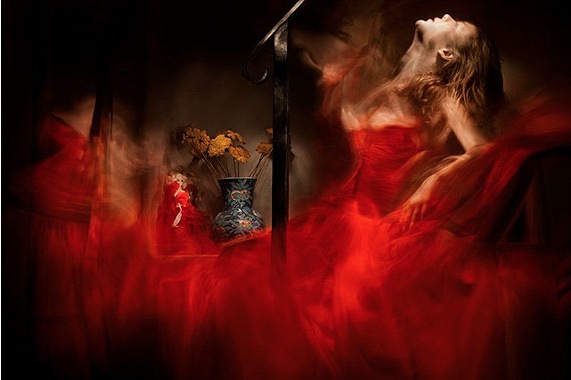
© Emmanuelle Bousquet Illusion#22 courtesy acte2galerie
« I began my first self-portraits at the age of 10. My maternal grandmother was the spark for this new passion. She was the one who bought me a little red Kodak, even if I remember having to go to great lengths in order to get it. In my first snapshots, I took center stage in front of the camera. I just reproduced what I knew: fashion models. Born to a family of designers, fashion was my only reference point ».
As a teenager, Emmanuelle Bousquet approached photography in a more serious manner, essentially using the medium as a form of expression. She began to photograph the two women closest to her, her mother and her sister, and herself as well. It seemed to her logical to use her own body in the same way that a painter uses his paint. In so doing, she passed to the other side of the mirror and made her first attempt at a photographic series, in black and white, in which all three women appear.
In 2004, she meets the photographer Antoine d’Agata, who suggested that she dive right into the universe of self-portraiture in a more direct, refined way, with the least amount of references to fashion or society possible. Hence, a timeless style is born; from that point on, the crude underlying realism that emanates from Emmanuelle’s photographs is visible. Taking refuge for several weeks thereafter in places of comfort to the artist, she produced her first true series of self-portraits, entitled Troubles. Subsequently, she has continued to develop this approach, while deepening her work on the femininity seen through the evolutions of her body. Enabled by the introspection acquired with Antoine d'Agata, Emmanuelle cultivated more aesthetic, symbolic concepts in her work, and defined the mise-en-scene that has become the marker of her photographic style.

© Emmanuelle Bousquet Illusion#30 courtesy acte2galerie
Illusion is her third series of photographic self-portraits. Composing a group of pictorial, mystical, timeless images, they are the fruits of indeth aesthetic and existential study; the product is the worldview of an artist seen through the prism of her own reflection.

